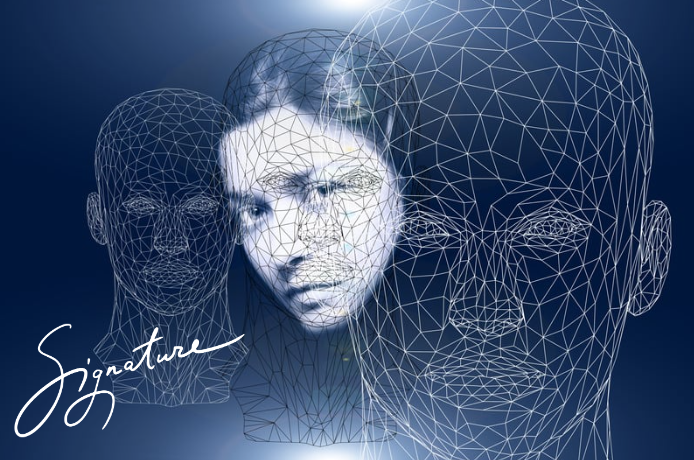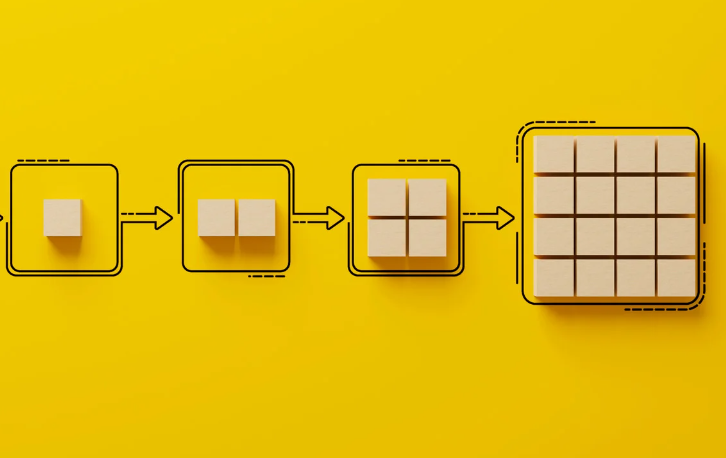Why Does Your Artist Signature Matter?
Elevate your artistic identity with tips for creating unique artist signatures. Enhance artwork identification with personalized touches.
Tired of nonsense pricing of DocuSign?
Start taking digital signatures with BoloSign and save money.
Introduction
Crafting a unique artist signature for your paintings is a crucial step in the artistic process, adding authenticity and establishing your artistic identity. Your signature not only serves as a mark of ownership but also contributes to the identity and recognition of your artwork.
In this guide, discover invaluable tips and insights into crafting a unique artist signature identification specifically tailored for paintings. From understanding the significance of signatures in art to practical advice on signature placement and style, delve into this resource to enhance your artwork's identification and leave an indelible mark on your creative journey.
Create a Signature That Makes Your Work Shine
The significance of an artist's signature transcends mediums, holding a crucial role in the art world. If you're an artist hesitant about consistently signing your pieces, it's time to explore why this practice is more than just a formality.
Primarily, it serves as a clear identifier, marking the piece as uniquely yours. Beyond personal attribution, a signature can contribute to the appreciation and value of paintings, drawings, and various art forms. As an artist gains recognition and popularity, the signature itself can augment the artwork's worth.
Furthermore, a signature provides a unifying thread across an artist's body of work. Even disparate collections can find a sense of cohesion through the consistent use of a signature. This cohesion contributes to the artist's distinct style and identity, making their work more recognizable and memorable.
How to Make an Artist Signature For Different Mediums?
Creating an artist's signature varies across mediums due to factors like material characteristics and optimal signature placement. Let's explore crafting signatures tailored to different artistic mediums.
Signing Paintings

Signing paintings presents challenges due to the varying behaviors of paint across different materials and types. Let's delve into three common paint mediums—oil, acrylic, and watercolor—and explore signature techniques tailored to each.
Oil paintings, known for their thickness and layered application, offer the opportunity to scratch the artist signature on painting onto the semi-wet top layer of paint using the end of a brush or a paint knife. This method works well once a dry base layer is established.
Acrylic paintings, drying faster than oil, require more deliberate timing for painting signature identification. Incorporating paint thinner with acrylic paint can aid in smoother manipulation, resulting in a clean, precise signature.
Watercolor paintings, drying even faster than acrylics, offer ease in unique artist signatures due to their thinness. Artists commonly use high-quality archival pens or paint pens for effortless signatures.
A universal tip: Remember to sign your artwork before applying any varnish, regardless of the painting medium used.
Placement of Artist Signatures on Paintings: Where to Sign?
Considering the placement of your artist signatures on paintings is crucial in the art world. Traditionally, artworks feature signatures positioned at the bottom left of the painting's front, a placement widely expected by collectors. However, there are no strict rules dictating the exact location, only guiding principles.
Some artists opt to conceal their oil painting artists signatures on the back of the painting. This choice might stem from a preference to keep the focus solely on the art or a personal inclination against prominently displaying their name. Consistency in placement and style is pivotal once you determine the ideal spot for your signature.
Signing Drawings

Considering the drawing medium is crucial when determining how to sign the piece. Drawings, whether in traditional media like graphite or modern mediums like ink, require distinct approaches for signing.
Unlike paintings where the signature often contrasts the artwork, signing a drawing presents challenges as the signature can easily blend in. Choosing whether the signature stands out or remains subtle is essential, depending on your artistic intent.
For instance, signing a graphite drawing with graphite itself might not achieve a noticeable effect. Alternatively, using ink or employing striking methods like a white signature creates a bold statement, ensuring visibility and making a deliberate artistic impression. Your intended message through the signature will guide your choice of signing tool.
Where to sign in a drawing?
Similar to signatures on paintings, traditional placement for signatures on drawings is typically on the front, situated at the bottom left. However, considering the purpose behind the signature can assist in making the decision. If the aim is to assertively claim authorship, positioning the signature on the front of the drawing is ideal.
Signing Prints

Distinguishing prints from one another is crucial to their value and preventing fraudulent duplication. To achieve this:
Begin by ensuring your prints are on high-quality material, as superior materials make signing easier and enhance the overall quality.
Selecting the appropriate signing medium, considering factors like size, placement, and style, is essential. For high-gloss prints, ink signatures work well, while matte finishes can be signed with a pencil and then sealed with a light varnish spray. Consistency in signing is crucial, but subtle variations in signatures can contribute to each print's uniqueness, adding to its authenticity.
Moreover, consider numbering limited-edition prints. Assigning numbers such as 1 through 10 to signify the limited quantity adds rarity and potential value to the artwork. This limited-edition status can attract collectors willing to pay a premium for exclusive prints.
Where to sign a print?
The placement of the signature on a print can contribute to its uniqueness. While most prints are traditionally signed near the edge, buyers might request signatures in alternative locations.
How to Sign Digital Art?
With the increasing popularity of digital art, establishing an effective method for signing your digital artwork is essential. Despite the different approaches, similar principles regarding signature placement and style apply. Tools like BoloForms can assist in creating suitable signatures for your digital art.
Whether opting for a static, uniform digital signature placed on your work or a hand-drawn signature, the significance of signatures on digital art equals that of traditional artwork.
Where to Sign Digital Art?
In the realm of digital art, signatures typically appear on the 'front' of the piece since there's no physical back to sign. While digital artworks are often associated with an online profile or showcased on websites, providing clear artist credit, a digital signature adds a final touch and personalizes the piece.
Signature Tips for an Artist

Here are some tips for crafting an artist's signature:
1. Legibility Matters
Ensure your signature is legible. A clear signature not only claims ownership of your art but also helps in promoting your name. Experiment with different sizes using tracing paper to find the right balance without overshadowing your artwork.
2. Full Name vs. Initials
Using your full name rather than just initials enhances name recognition, especially when establishing a brand or selling your artwork.
3. Sign at the Right Time
Sign your work promptly after completion, ensuring it's done before varnishing or framing, as these processes can complicate or limit signature placement.
4. Consider Framing
Keep in mind the space framing will occupy when deciding on the signature placement. Avoid signing too low or close to the edges to ensure visibility and avoid framing interference.
5. Utilize a Straight Edge
A straight edge aids in aligning your signature neatly, lending it a professional appearance while ensuring consistency.
6. Digital Signatures for Consistency
Create a reusable digital signature for your digital artwork. Tools like BoloForms offer a platform to generate and verify digital signatures, promoting consistency and authenticity across your digital art pieces.
Remember, your signature is not just an identifier but an integral part of your brand as an artist. Crafting it with care ensures it complements and enhances your artwork.
How to Generate an Electronic Signature for Art Using BoloForms
BoloForms offers a seamless solution for digital artists to create electronic signatures effortlessly. With its diverse range of plans, BoloForms becomes a valuable ally in your digital art endeavors.

It aids in crafting a uniform, professional, and easily identifiable signature that maintains consistency across all your digital art pieces. This tool simplifies the process, allowing artists to establish a distinct digital signature tailored to their style, fostering a cohesive and branded approach across their artworks.
FAQs
What's the Importance of a Distinct Artist Signature?
A distinct artist signature is crucial as it:
- Confirms Ownership: Establishes the artist's claim to the artwork.
- Builds Brand Identity: Represents the artist's unique style.
- Aids in Authenticity: Verifies the legitimacy of the art piece.
- Adds Collectible Value: Enhances artwork recognition and value.
What Benefits Does a Digital Artist Signature Provide?
A digital artist's signature offers these benefits:
- Authentication: Validates ownership and authorship of digital art.
- Brand Recognition: Reinforces the artist's identity and style.
- Forgery Protection: Deters unauthorized use and replication.
- Professionalism: Adds a polished touch to the artwork.
- Ease of Reproduction: Enables consistent signing across artworks.
- Increased Value: Enhances artwork desirability for collectors.
Conclusion
In conclusion, an artist's signature holds immense significance in the art world, transcending mediums and serving as a mark of authenticity, ownership, and individuality. By crafting a unique artist signature tailored for paintings, artists can elevate the recognition and value of their artworks.
The importance of signatures in art, whether on paintings, drawings, prints, or digital creations, lies in their ability to establish authorship, unify an artist's body of work, and enhance brand identity. Implementing the right signature techniques for various mediums ensures the signature becomes an integral part of the artwork without overshadowing its essence.
Moreover, the strategic placement of signatures, whether on the front or back, contributes to the artwork's uniqueness and collector appeal. Considering factors like legibility, timing, and framing during the artist signature identification process ensures a professional and consistent signature that complements the artwork.
With the advent of digital art, the role of signatures has extended to the digital realm, where tools like BoloForms offer convenient solutions for creating electronic signatures, maintaining consistency, and adding value to digital artwork.
Ultimately, an artist's signature not only authenticates the artwork but also represents the artist's identity, style, and brand. Crafting and placing signatures thoughtfully is an essential aspect of an artist's creative journey, leaving a lasting impression and contributing to the overall appreciation and recognition of their art.

Paresh Deshmukh
Co-Founder, BoloForms
16 Jan, 2024
Take a Look at Our Featured Articles
These articles will guide you on how to simplify office work, boost your efficiency, and concentrate on expanding your business.


